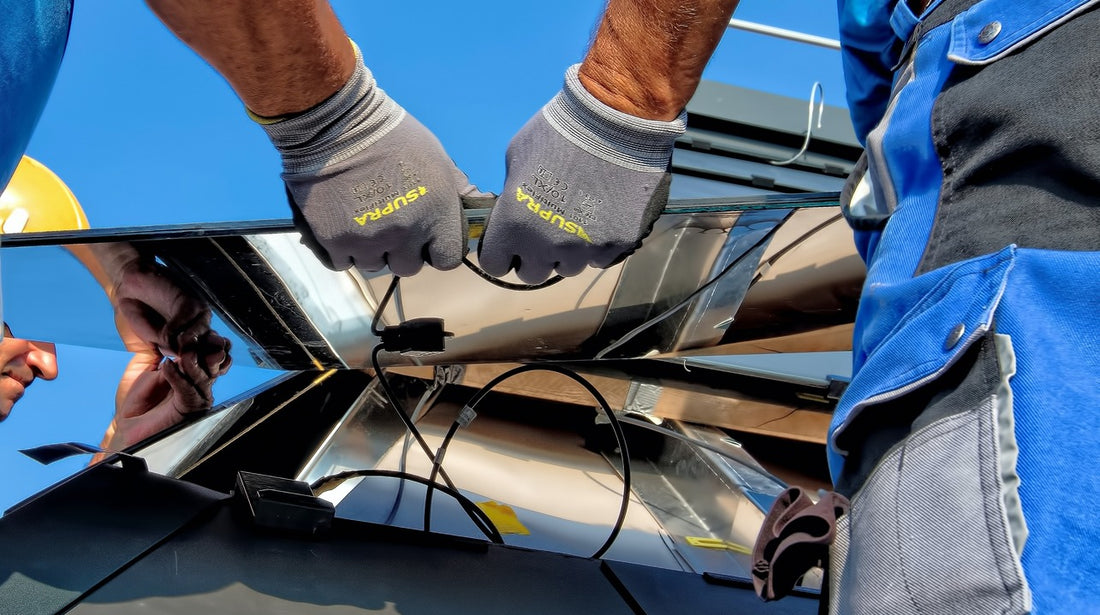
Does a Solar Panel Need a Ground Rod?
Share
Solar energy has become increasingly popular as a sustainable and cost-effective way to power our homes and businesses. However, with great power comes great responsibility, and one important aspect of solar panel installation that often goes overlooked is grounding. Grounding your solar panel system is crucial for safety and protection against lightning and electrical surges. In this article, we’ll explore why grounding is essential, how it works, and the steps involved in grounding your solar array.
Why Grounding Matters
Imagine your solar panel system as a bridge connecting the sun’s energy to your home’s electrical system. Just like your home’s electrical outlets are grounded to ensure safety, your solar panels and associated equipment need to be grounded too. This grounding helps protect your system and your property from potential electrical hazards.
One of the most significant risks that grounding addresses is lightning strikes. In areas prone to lightning storms, an ungrounded solar panel system can become a lightning target. Without proper grounding, the energy from a lightning strike can surge through your solar panels and into your home’s electrical system, causing extensive damage to your equipment and potentially starting a fire.
How Grounding Works
Grounding involves creating a path of least resistance for electrical currents to follow, directing them safely into the ground. This is achieved through the use of copper wire, which is an excellent conductor of electricity. The copper wire is typically buried in the ground or connected to rebar in your foundation. By doing so, any stray electrical currents, such as those from a lightning surge or a short circuit, are safely diverted away from your solar equipment and your home.
Grounding Your Solar Panel System
Now that we understand the importance of grounding, let’s look at the steps involved in grounding your solar panel system. While this is a general guideline, it’s essential to check your local city permits and codes, as they may have specific requirements that differ from those mentioned here.
Materials You’ll Need
- Ground rod (at least 8 feet long)
- Thick, bare copper wire capable of handling large electrical currents
- Solar Panel Clamp for attaching the wire to the grounding rod
- Mounting equipment (solar panel mounting systems)
- Black electrical tape or zip-ties
Steps to Ground Your Solar Panel System
Drive a Grounding Rod - Begin by driving a grounding rod at least 8 feet deep into the earth near your solar panel system. Leave around 6 inches of the rod above the ground to attach your copper wire.
Attach Copper Wire - Use a clamp to securely attach the thick, bare copper wire to the grounding rod. Ensure it can handle large electrical currents, especially if you’re in an area prone to lightning strikes.
Run the Wire - Next, run the copper wire up your pole mounting system. Use black electrical tape or zip ties to keep the wire securely attached to the pole.
Connect to Solar Panel Mounting - Locate the grounding screw provided in your solar panel mounting system. Wrap the copper wire around the grounding screw and tighten the bolt securely.
Trim Excess Wire - Finally, trim off any excess copper wire to ensure a clean and tidy installation.
By following these steps, you can effectively ground your solar panel system, reducing the risk of electrical hazards, lightning damage, and ensuring the safety and longevity of your investment.
Remember that while this method provides a general guideline for grounding, it’s crucial to consult your local regulations and codes for specific requirements in your area. Proper grounding not only protects your solar panel system but also keeps your home and loved ones safe from electrical hazards.
